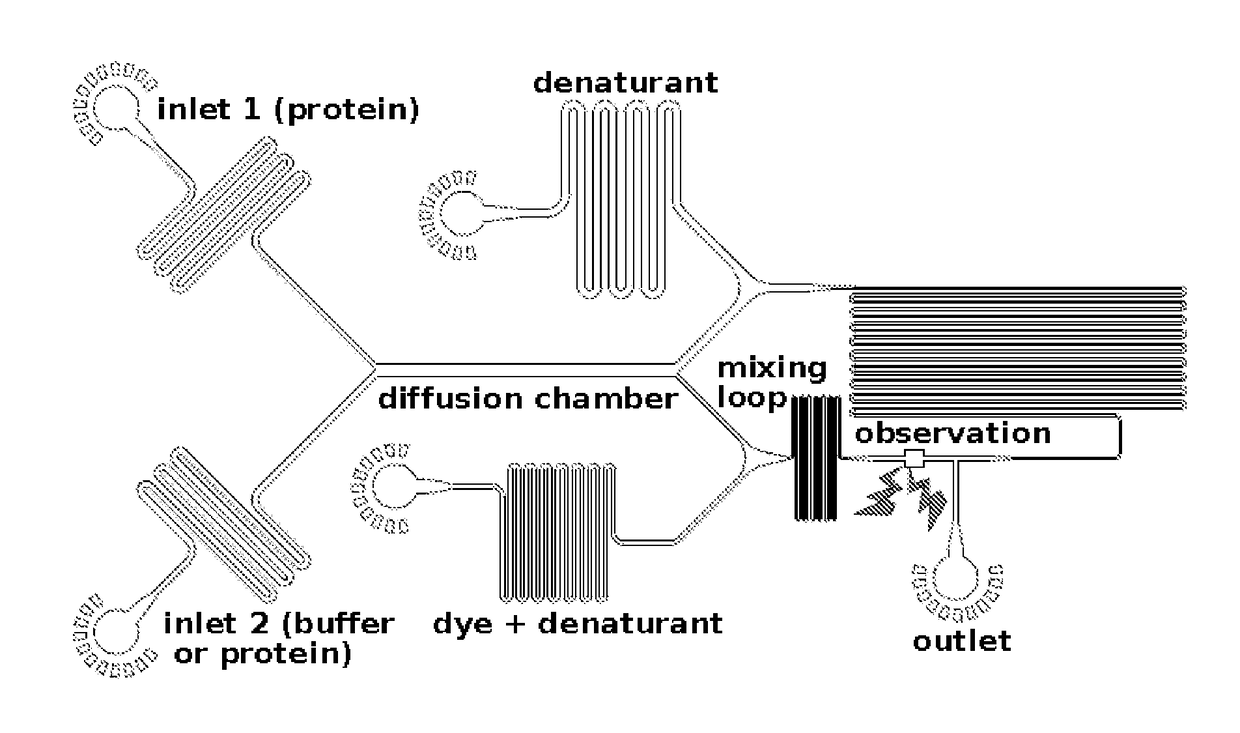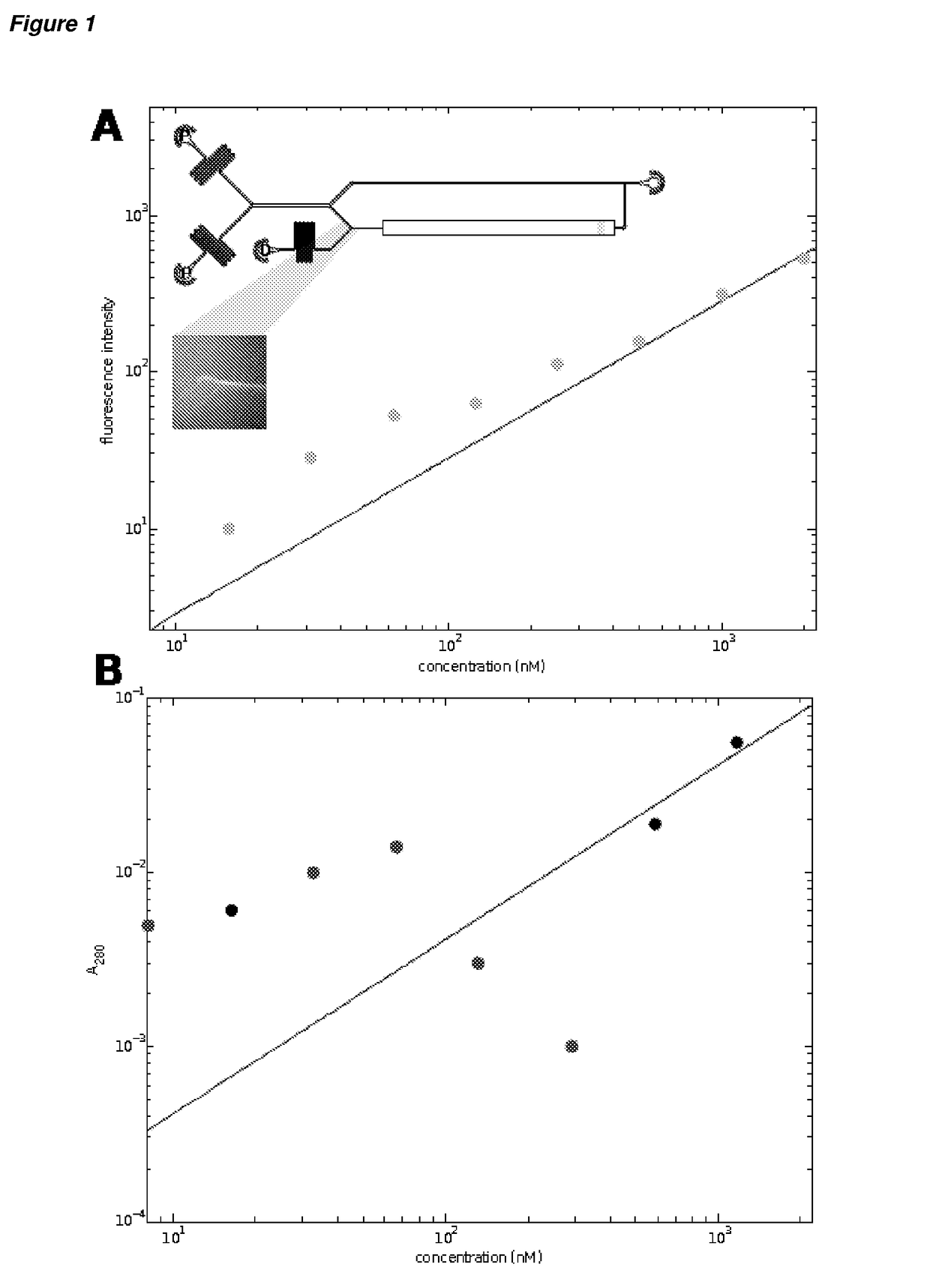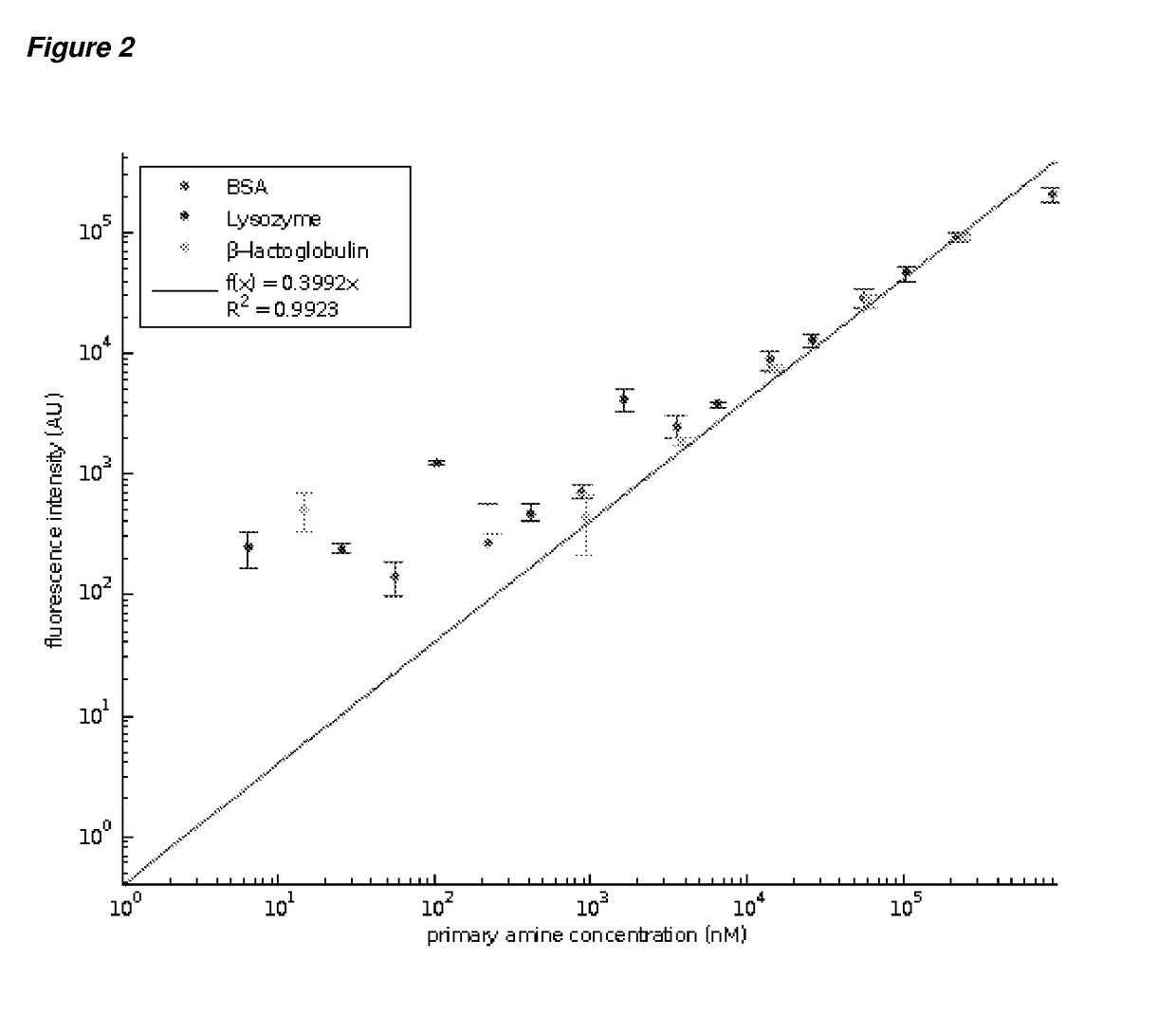Fluidic separation and detection
a technology of fluidic separation and detection, applied in the field of flow methods, can solve the problems of agglomerated species being destroyed, protein interactions are typically perturbed by traditional measurement and detection schemes,
- Summary
- Abstract
- Description
- Claims
- Application Information
AI Technical Summary
Benefits of technology
Problems solved by technology
Method used
Image
Examples
Embodiment Construction
[0067]The present invention provides methods and apparatus for analysing a component in a fluid, including a component in a multicomponent mixture. The method of the invention includes the step of diverting a part of a flow of contacting first and second fluids, and analysing the diverted flow. The diverted part of the flow is a portion of the lateral distribution of the component across the first and second fluid flows. The analysis step is performed advantageously in line with the diverting step and the separation step, where present.
[0068]Typically, the distribution of the component across first and second flows is obtainable by diffusive transport of the component from the first fluid flow into the second fluid flow. However, other techniques that allow the lateral movement of a component from a first fluid flow to a second fluid flow may be used. For example, electrophoretic techniques may be used to obtain a distribution of a component across the first and second fluid flows.
[...
PUM
| Property | Measurement | Unit |
|---|---|---|
| pH | aaaaa | aaaaa |
| hydrodynamic radius | aaaaa | aaaaa |
| ionic strength pH | aaaaa | aaaaa |
Abstract
Description
Claims
Application Information
 Login to View More
Login to View More - R&D
- Intellectual Property
- Life Sciences
- Materials
- Tech Scout
- Unparalleled Data Quality
- Higher Quality Content
- 60% Fewer Hallucinations
Browse by: Latest US Patents, China's latest patents, Technical Efficacy Thesaurus, Application Domain, Technology Topic, Popular Technical Reports.
© 2025 PatSnap. All rights reserved.Legal|Privacy policy|Modern Slavery Act Transparency Statement|Sitemap|About US| Contact US: help@patsnap.com



